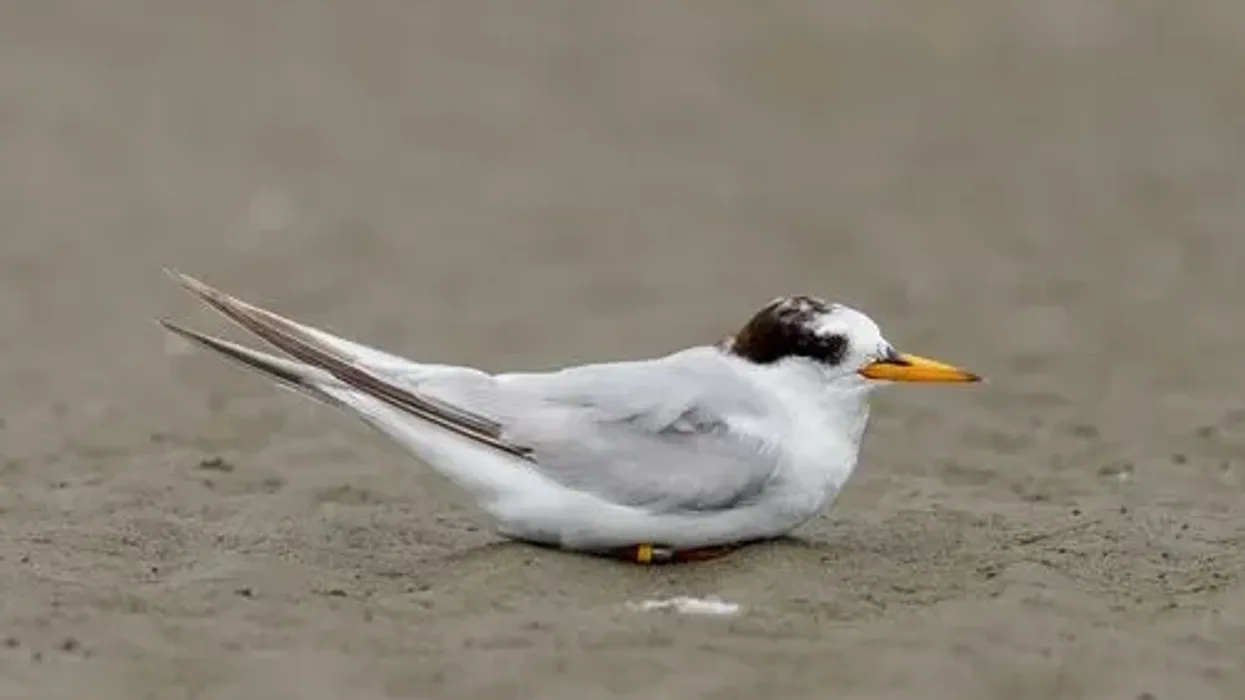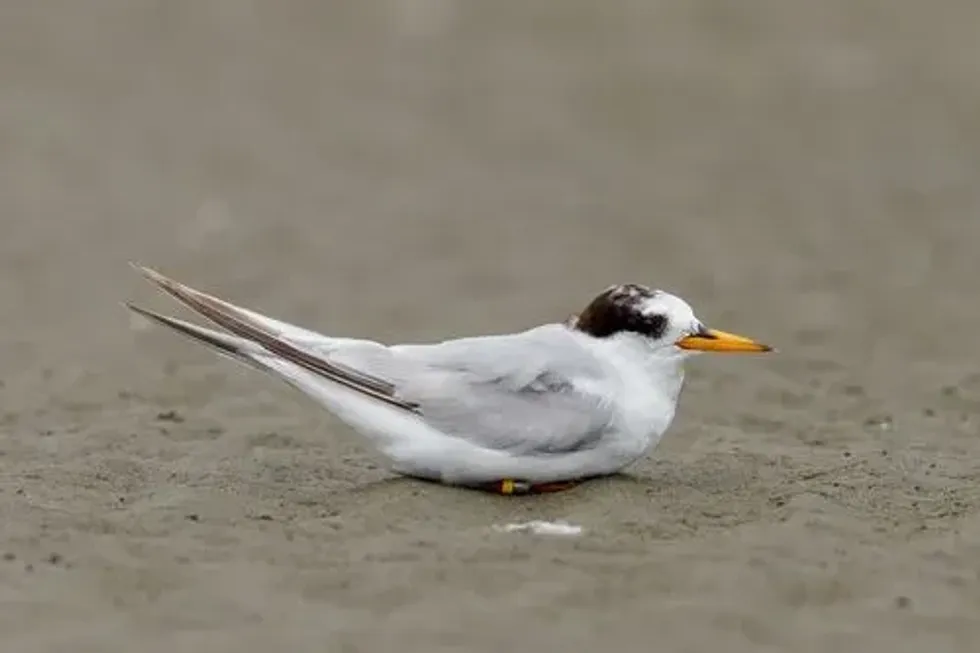The fairy tern is a family of birds, precisely water birds, that feed on fish, and other sea creatures. This little seabird belongs to the Aves class of animals, and it is scientifically known as Sternula nereis.
They are mostly found on isolated sandy inlets and along the coast of Western Australia, south to Victoria and Tasmania, New Caledonia, New Zealand, and they are the only vagrant to the east coast. They are small terns, native to the southwestern Pacific. The female fairy tern lay up to two eggs and sometimes only one.
They nest on tree branches, buildings, and rocky slopes. The migratory behavior of the fairy terns is not well-understood.
The fairy tern bird feeds on small fish by plunge diving or foraging. They can feed on approximately 5-8 cm of the water.
There are different types of terns in different regions, including the New Zealand fairy tern, white fairy tern, fairy tern Hawaii, and many more. They have acquired their names mostly based on the place they are present and their color.
It has been observed that their population has been declining especially in New Zealand due to many factors, including human causes and natural threats.
If you want to know more about the terns' species, read on. You may also want to check out interesting facts on the Arctic tern and Caspian tern as well.
Fairy Tern Interesting Facts
What type of animal is a fairy tern?
The fairy tern is a type of sea bird that belongs to the Laridae family.
What class of animal does a fairy tern belong to?
This bird species belong to the Aves class of animal.
How many fairy terns are there in the world?
The total population of fairy terns worldwide is unknown. But the population of all age classes fairy terns in Australia consists of between 5000-10,000, and there are around 45 fairy terns in New Zealand.
A huge decline in the population of these birds has been observed, since the introduction of roads and development caused by human disturbance, change in climate, and their predators.
Where does a fairy tern live?
The fairy tern, Sternula nereis, are generally found in the wetlands, near the sea coast, lakeside, and across the tropical oceans of the world. The fairy tern nest is a shallow scrape in sand, shell fragments, and also rimmed with small pebbles.
What is a fairy tern's habitat?
The habitat of these birds is found mostly on coastal beaches, in both offshore and inshore islands, harbors, sewage farms, lagoons, and estuaries.
Whether it is the Australian or New Zealand fairy tern, they are commonly known to prefer saline and fresh wetlands, along with near coastal terrestrial wetlands, which includes ponds or lakes. Their distribution can be seen on the coast of Western Australia, but rare in the Northern Territory, New South Wales, and Queensland.
They tend to stay in places with the presence of water since they are a species of water birds and forage fish for their livelihood.
Who do fairy terns live with?
Since they breed in colonies, they are believed to stay with their kinds or in groups. But in New Zealand, these birds are solitary in nature and nest alone or with breeding pairs during the breeding season for incubation of the eggs and are rarely seen in groups. Their very low population has something to do with this.
How long does a fairy tern live?
A fairy tern generally lives between 11-17 years, while most tend to live for around 15 years. However, not many of their chicks get the chance to survive or grow up due to predators like snakes, and rats, which get to them even before they hatch.
How do they reproduce?
These birds are monogamous breeders that have a long-lasting bond with their mates, loyal to their mates and their nest sites along with their foraging areas. The breeding season or courtship begins in September and eggs are being laid right from October to January.
Fairy terns lay one or two eggs per lay. Before laying, the females are fed by their mates.
The incubation of the fairy tern egg is done by both the male and female. The incubation period lasts about 21 days. The breeding pattern differs in several regions.
In Australia, they breed in colonies, while the fairy tern, New Zealand, nests alone as breeding pairs. In 30 days the fairy tern chicks are usually fully grown, but they stay for a month with their parents until they learn how to forage themselves.
What is their conservation status?
The conservation status of the fairy tern is Vulnerable overall but Critically Endangered in New Zealand due to their declining and unstable population. The decline in the population of these birds has been observed for quite a while worldwide due to human disturbance, climate change, and their predators.
Fairy Tern Fun Facts
What do fairy terns look like?
The fairy terns generally weigh around 70 g as an adult, with a length of 10 in (25 cm), and has a wingspan of 70-80 cm. It has a white color dominance with a black head, a light yellow/orange bill, pale gray in its upperparts, and orange legs.
The head fades to mottled white and black, while its legs and bill become less bright in color. The male and female fairy terns have similar appearances, and thereby it is difficult to differentiate. Their black head color makes it easy to recognize the bird.
The immature fairy terns are similar to the non-breeding adults. In breeding plumage, their bills are yellow and their legs orange-yellow color.
How cute are they?
They sure are cute-looking tiny birds with their bright feathers. Their black or dark head makes them distinguishable from other sea bird species.
How do they communicate?
It is unidentified as to how exactly they communicate. They are known to make loud noises, especially when in groups.
They are known to have vocal and sound behavior. These birds make hard and loud sounds like 'tchi wick', and also make a high-pitched 'zwitt' when flying, but it is unknown if that is their way of communication or not.
How big is a fairy tern?
Fairy terns are small birds who weigh only 70 g with a length of 10 in (25 cm). They 10 times smaller than a pigeon.
How fast can a fairy tern fly?
When some of them migrate to other regions due to climate issues, a fairy tern can fly 25,000 mi one way. This indicates that they can cover long distances with their great flying speed.
How much does a fairy tern weigh?
A typical adult fairy tern weighs around 70 g.
What are their male and female names of the species?
There are no names to describe the male and female species of fairy tern.
What would you call a baby fairy tern?
Like any other bird, a baby or young fairy tern is commonly known as a chick.
What do they eat?
The diet of the fairy tern consists of small fish, snails, and other plant material, but it is mostly a carnivorous bird who prefers to forage fish on the coast.
Are they aggressive?
Fairy terns are aggressive birds but only when provoked or for the purpose of defending their nest sites.
Would they make a good pet?
Being a cute bird, they would make a good pet, but their diet which consists of fish, and their preference to stay in coastal areas while foraging food from the water makes it hard to pet them.
Did you know...
Fairy terns are very loyal birds to their mates, their foraging areas, and their nest sites.
The chicks of the fairy bird freeze and blend into their surroundings when their parents make alarm calls so to save themselves from predators.
The chick and adult fairy terns, as well as their egg, are camouflaged so that even if you pass them, you won't even notice them. It is like a natural gift for their self-defense against their predators.
Fairy tern symbolism
The fairy tern got its name from its silky plumage white, large and black-rimmed eyes, and its slender wings. It resembles the looks of fairies we hear of and see in myths and tales.
What to do if you see a fairy tern in trouble?
As an endangered and cute bird, it is definitely wise to help the fairy tern in trouble, but kids should make sure to get the help of an adult in this matter as there are chances that they may get aggressive.
Here at Kidadl, we have carefully created lots of interesting family-friendly animal facts for everyone to discover! Learn more about some other birds including glossy ibis, or Indian roller.
You can even occupy yourself at home by drawing one on our Fairy Tern coloring pages.









